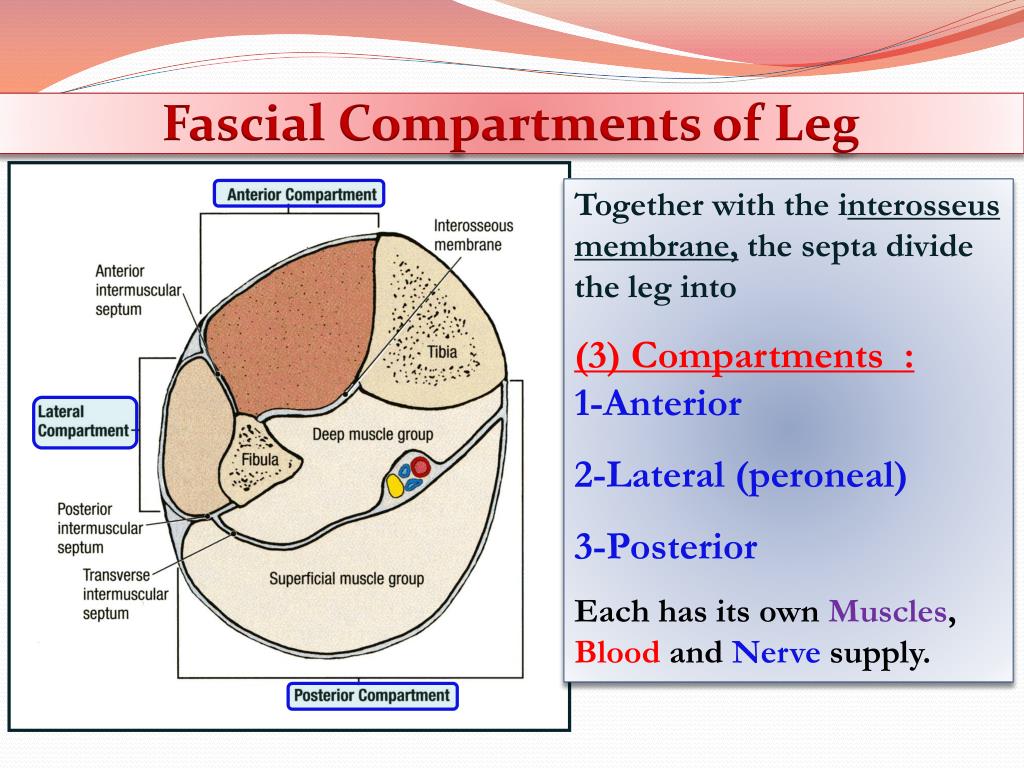
It is assumed that, as in acute compartment syndrome, the flow of oxygenated blood into the muscles is impeded if the pressure within the muscle is greater than the fluid pressure within the vessels themselves. If the muscle is hypertrophied or the fascia is less compliant, there is less room within the compartment for expansion and the pressure within the compartment increases. Chronic exertional compartment syndrome also occurs due to the build-up of pressure within the compartment, but differs from the acute process in that the increased pressure occurs with exercise, and resolves when the activity is stopped.ĭuring strenuous exercise, muscle volume normally increases up to 20% Bull Hospital for Joint Diseases.2005 62(3,4):77-84. Acute compartment syndrome, caused by extreme swelling after a traumatic event, is a medical emergency and requires immediate treatment with a fasciotomy before the lack of blood flow results in tissue death. In effect, this compartment is ‘land-locked’ within the anatomy of the leg.Ĭompartment syndrome occurs when the pressure of the fluid inside the compartment becomes so great that it restricts blood flow into the muscles within the compartment. The muscles of the posterior compartment assist with inversion and plantar flexion of the foot and the posterior tibial nerve (L5-S1) innervates them.įigure 1: Muscular compartments of the lower leg The deep posterior compartment of the lower leg is situated deep within the calf, beneath the gastrocnemius and soleus muscles and nearly sandwiched between the tibia and fibula. The posterior tibial nerve, artery, and vein also course through the deep posterior compartment. Within the deep posterior compartment lie the tibialis posterior, flexor digitorum longus, flexor hallucis longus, and popliteus muscles. Chronic exertional compartment syndrome most often affects the anterior compartment, followed by the deep posterior compartment in frequency Br J Sports Med. Some consider the tibialis posterior to be a compartment unto itself because of its own fascial covering, but for practical purposes, it is included in the deep posterior compartment.

A compartment consists of a fascial sheath and the contents within – muscles, nerves, and blood vessels. There are four fascial compartments within the lower leg: anterior, lateral, superficial posterior, and deep posterior (see Figure 1). The pain occurs bilaterally in 80-95% of athletes with CECS, and involves the deep posterior compartment in 32%-60% of all cases of CECS Br J Sports Med. Pain, numbness along the posterior-medial aspect of the calf, and weakness in toe flexion, ankle inversion and plantar flexion, may continue for some time after exercise, but usually resolve with a day’s rest, only to re-appear when the athlete returns to training. Pain may be present upon aggressive palpation or passive ankle dorsiflexion. With chronic deep posterior compartment syndrome (CDPCS), the muscles of the calf may feel swollen or tense upon physical exam, especially immediately after exercise. The pain consistently manifests itself shortly after starting an activity and continues to worsen until the athlete is forced to stop the activity. Pain or numbness may extend to the medial aspect of the foot. The pain may be described as a burning, aching, bursting, or tightness along the posterior medial border of the tibia. Pain deep within the calf that starts after 20 to 30 minutes of exercise and resolves with rest is likely caused by chronic exertional compartment syndrome (CECS) of the deep posterior compartment.



Lower leg pain is a common complaint among runners. Alicia Filley assesses lower leg pain caused by chronic exertional compartment syndrome of the deep posterior compartment.


 0 kommentar(er)
0 kommentar(er)
